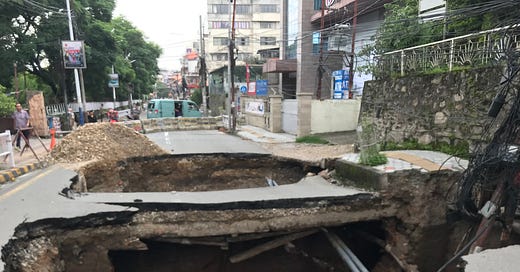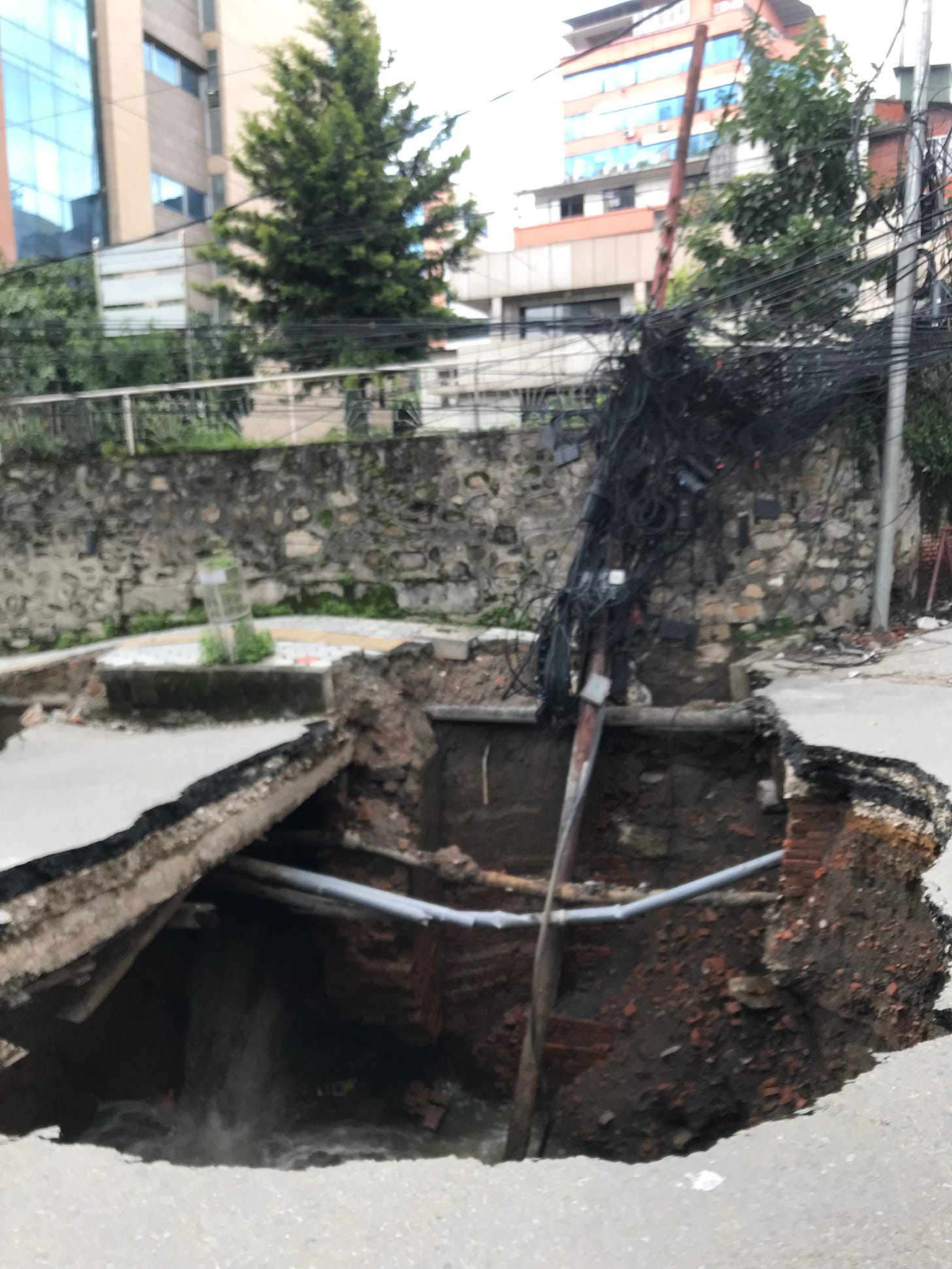Walking home from the jatra that night, on a small road just after entering Thamel, I came to a stretch where the power was completely out. Ahead of me was a small crowd, but I couldn’t see why.
A building had collapsed. There was a bright light, perhaps coming from the bulldozer waiting patiently beyond the crowd, that highlighted a pile of brick and wood. An old building, then. A man in uniform was giving an interview to a TV crew. I asked an onlooker what had happened.
“It collapsed, from the rain,” they said.
As I walked away the bulldozer followed.
There was no panic or emergency services, and nothing about it in the news the next day; thankfully, it seems no one was hurt.
**
Less than a week later, in another part of town, I saw that a usually busy road had been cordoned off. A little down from the traffic diversion, bright orange cones and bamboo poles were guarding one of the biggest sinkholes I’ve ever seen. Not just one, but several grouped together. You could see all the way down, past sagging and broken plastic and metal pipes to wooden struts and brick-built walls and water channels, and a grey river gushing. In one place nearly a whole power line had been swallowed, its crowning maze of wires now sitting at road level.
Apparently it happened earlier in August, as I did find an article where it was mentioned, along with numerous other recent sinkholes; part way through the piece was the subheading Underground infrastructure remains a mystery which I found surprisingly disconcerting.
Words can’t really do it justice, so have a look for yourself.
Traffic will be backed up in the Kamaladi area for the foreseeable future, but this is nothing compared to the lives lost each year at this time due to flooding and landslides. The rain that I love so much, that brings life and grows the crops and fills the rivers that power our lives also brings destruction, loss and death.
**
Now, tonight, it pours down again.




